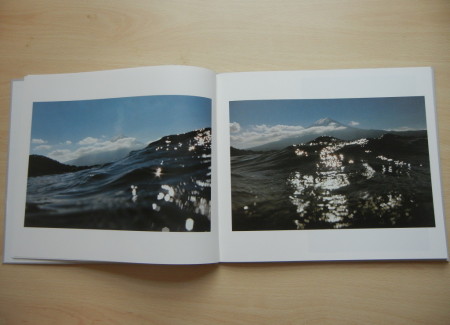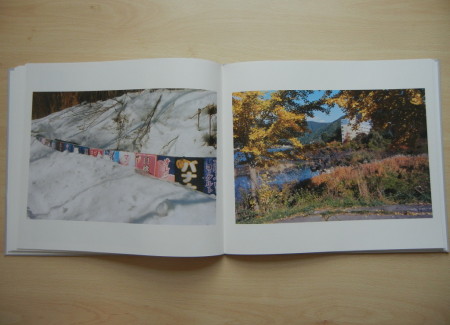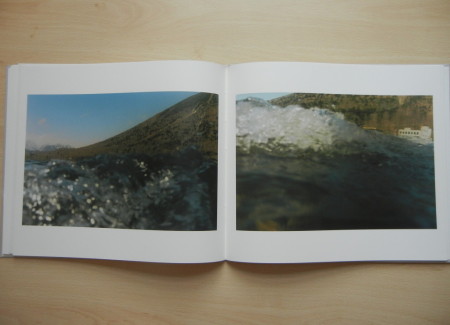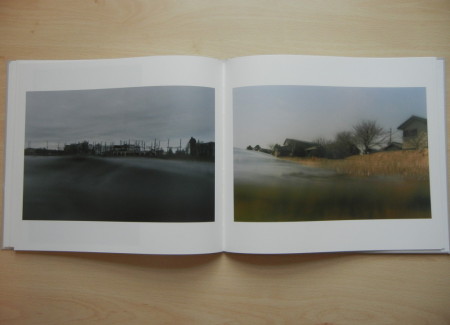JTF (just the facts): Published in 2013 by Osiris (here). Hardcover (with slipcase), 72 pages, with 58 color images made between 2002 and 2011. Includes a thumbnail array and a 12 page booklet with an artist interview conducted by Akihito Yasumi (Japanese and English). (Spread shots below.)
Comments/Context: Asako Narahashi’s Ever After feels like a continuation, a deepening and broadening of the visual ideas that were found in the book that originally brought her artistic recognition, Half Awake and Half Asleep in the Water. While there are still a few sparkly images of mountains being engulfed by Hokusai-like waves (a composition that has become a kind of Narahashi signature), this collection is more somber and distanced, like a step back to take stock and track the subtleties that were lost in the first go round. It also includes true landscapes for the first time (no water), creating an intermingling that brings forth threads of conceptual frameworks that were previously less obvious.
Part of what made her first crop of claustrophobic landscapes from the water so compelling was their sense of being uniquely Japanese; the psyche of an island nation, with its anxieties and uneasiness with rising water, caught in a dreamlike in between space, where the traditional point of view was reversed, revealing moments of simulated drowning. But this edit finds Narahashi in the water in the canals of Amsterdam, the ocean at Brighton Beach, and various other waterways from Dubai to Santa Monica, with differences in building styles, geography, and weather inflected palette jutting up from the swelling waves. This universality creates a rhythmic pattern, with Narahashi applying her unique and innovative viewing method to a wide range of subjects. As a result, her style has the appearance of being more methodical, the visual interruption and inversion evolving into an intellectual framework for exploring the differences of landscape.
At first glance, Narahashi’s landscapes without water seem dull in comparison to their submerged brethren; her views are not grand or romantic, but documents of transitional spaces decorated by apartment blocks, highway overpasses, and scrubby growth. But a more extended look allows a subtle theme to emerge – the use of a foreground disruption. While not as invasive as Friedlander-style interruption, there is still a consistent feeling of blocking, of chain link fences, roadside vegetation, and rusted train rails pushing out toward the viewer, just like the waves do. Suddenly, all her landscapes make sense, and share a common underlying thread with the waterscapes.
When seen together, Narahashi’s photographs end up being less about water and more about distance, often with a hint of aloof melancholy. Her “seeing from afar” perspective increases the mood of anxious reaching, creating a constant tension between wanting to get closer and being prevented from doing so.
Collector’s POV: Asako Narahashi is represented by Priska Pasquer in Cologne (here) and Rose Gallery in Santa Monica (here). Her work has little secondary market history, so gallery retail remains the best option for those collectors interested in following up.













